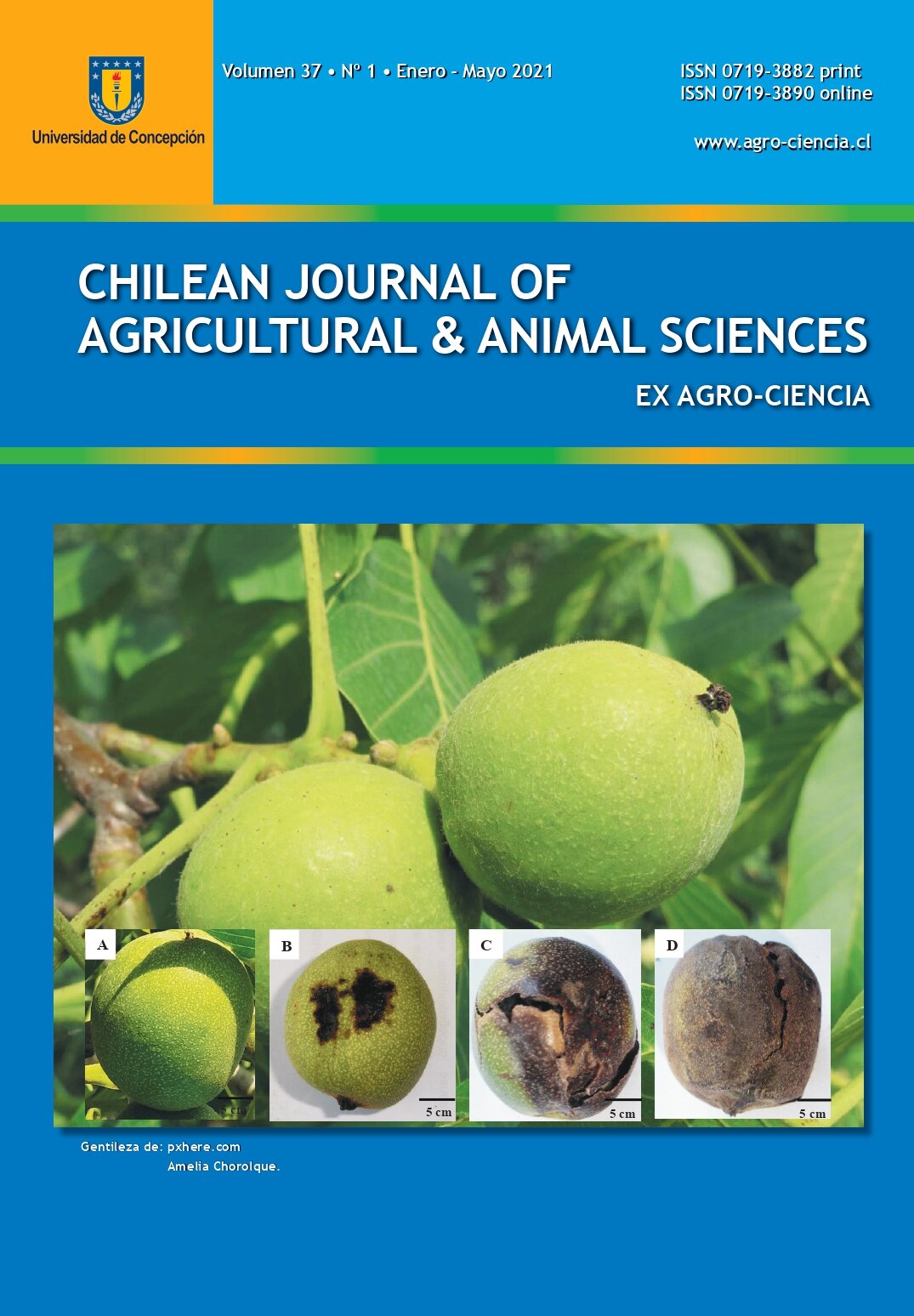EFFECT OF Acacia caven (Mol.) ON THE PHYSICAL PROPERTIES OF SOIL UNDER GRAZING EXCLUSIONS
Lely Soto1*, Esteban Leiva1, Felipe Montoya1, Óscar Seguel1, Cristian Delpiano2, Pablo Becerra2, Inao Vásquez3, Alejandro Miranda3,4, y Cecilia Smith-Ramírez2
ABSTRACT
Cultivated land has increased in Chile as a result of a process in which native woodland sites were converted to agricultural production. This process had an intermediate step in which sclerophyll species were replaced by Acacia caven, prior to cattle grazing. This land use change presents environmental impacts resulting from carbon losses of ecosystems. Therefore, the main objective of this study was to evaluate the effect of A. caven on the physical properties of soil. The study was conducted in two sites of central Chile (Pirque and Peñuelas). Soil samples were taken at depths of 0-10 and 10-20 cm with and without A. caven cover. Organic matter, bulk density, pore size distribution and aggregate stability were evaluated. A marked difference was found in terms of depth in both study sites, also observing a process of densification of the subsurface horizon. A. caven cover has beneficial effects on the soil because it produces increased organic matter, decreased bulk density, and a higher proportion of coarse pores compared to soils without A. caven. However, available water holding capacity was higher in the site that had no influence of A. cavenin Pirque. A. caven cover also promotes less mechanical resistance and higher structural stability, so that it is a good alternative to specific site protection towards the restoration of sclerophyll forest.
Key words: degraded ecosystem, organic matter, cattle grazing, restoration.
1 Departamento de Ingeniería y Suelos, Facultad de Ciencias Agronómicas, Universidad de Chile, Casilla 1004, Santiago, Chile.
2 Instituto de Ecología y Biodiversidad (IEB), Casilla 653, Santiago, y Facultad de Ciencias Forestales y Recursos Naturales, Universidad Austral de Chile, Casilla 654, Valdivia, Chile.
3 Laboratorio de Ecología del Paisaje Forestal, Departamento de Ciencias Forestales, Universidad de La Frontera, Casilla 54-D, Temuco, Chile.
4 Escuela de Graduados, Facultad de Ciencias Forestales y Recursos Naturales, Universidad Austral de Chile, Casilla 654, Valdivia, Chile.
*Corresponding author E-mail:


